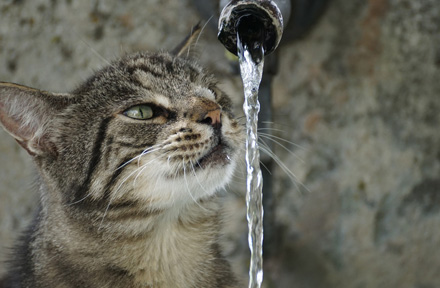-
Home
-
Shop
New -
Share Pet Story
-
Explore
-
Support
-
Track Order
Oct 26, 2023
Author:Jackson Watson
In this comprehensive guide, we delve into the world of automatic pet feeders, addressing the common challenges that pet owners might encounter with these devices. From food dispensing issues to power and connectivity problems, we provide valuable insights and effective troubleshooting tips to ensure your furry companions always receive the right nourishment at the right time.
Automatic pet feeders are automated devices designed to dispense food for pets at predetermined intervals, ensuring they receive timely meals even when their owners are away. These feeders are equipped with various features such as programmable feeding schedules and portion control, offering convenience and consistency in pet feeding routines.
The market boasts a diverse array of automatic pet feeders, ranging from basic gravity-fed models to sophisticated electronic feeders equipped with customizable settings and smart technology integration. Some popular types include portion control feeders, timed feeders, and Wi-Fi-enabled feeders that can be controlled remotely via smartphones.
Automatic pet feeders serve as a boon for pet owners with hectic schedules, enabling them to maintain a regular feeding routine for their pets even in their absence. These devices promote portion control, preventing overeating or underfeeding, and can significantly reduce the stress and worry associated with ensuring that pets are adequately nourished throughout the day.
Food jamming or clogging within the feeder
One of the most common issues encountered with automatic pet feeders is the occurrence of food jamming or clogging within the feeder's dispensing mechanism. This can disrupt the feeding schedule and leave pets hungry or overfed. To tackle this, regularly inspect and clean the feeder's food storage and dispensing components to prevent any accumulation of debris or moisture that could lead to blockages.

Inconsistent or inaccurate food portioning
Another prent concern is the inconsistency or inaccuracy in food portioning, which can lead to nutritional imbalances or overconsumption. To address this issue, carefully calibrate the feeder's portion control settings, ensuring they accurately correspond to your pet's dietary requirements and portion sizes.
Dealing with power outages and battery failures
Power outages or battery failures can disrupt the automated functionality of pet feeders, causing delays or complete cessation of food dispensing. To counter this, consider using battery backups or uninterrupted power supply (UPS) systems to ensure uninterrupted operation during power fluctuations or outages.

Troubleshooting Wi-Fi connectivity problems
For Wi-Fi-enabled feeders, connectivity issues can hinder remote access and control, affecting the ability to monitor and adjust feeding schedules. To troubleshoot this, ensure the feeder is within the range of a stable Wi-Fi signal and consider employing signal boosters or relocating the feeder to an area with stronger connectivity.
Identifying and resolving motor or gear-related issues
Mechanical malfunctions, such as motor or gear-related problems, can impede the smooth functioning of the feeder, leading to irregular or halted food dispensing. Regularly inspect the feeder's mechanical components for signs of wear and tear, and promptly lubricate or replace any damaged parts to maintain optimal performance.
Handling physical damages or breakages in the feeder structure
Physical damages or breakages in the feeder structure can compromise its integrity, potentially posing safety hazards for pets and hindering the feeding process. It is crucial to conduct routine inspections for any structural damages and promptly repair or replace any compromised parts to ensure the feeder's safety and longevity.
Cleaning and lubricating the feeder components regularly
Regular cleaning and lubrication of the feeder components are essential to prevent the accumulation of dirt, dust, or food particles that can lead to blockages or mechanical failures. Follow the manufacturer's guidelines for proper cleaning procedures and use pet-safe lubricants to maintain smooth and efficient operation.
Conducting thorough inspections for wear and tear
Frequent inspections for wear and tear are crucial in identifying potential issues before they escalate into significant malfunctions. Check for any signs of corrosion, rust, or physical damage, and address these issues promptly to prolong the lifespan of the feeder and ensure the safety of your pets.
Understanding the importance of appropriate portion sizes for different pets
Recognizing the varying dietary requirements of different pets is key to maintaining their overall health and well-being. Consult with a veterinarian to determine the ideal portion sizes for your pet's breed, size, and activity level, and adjust the feeder's settings accordingly to prevent overfeeding or nutritional deficiencies.

Creating a consistent and reliable feeding schedule for pets
Establishing a consistent feeding schedule promotes a sense of routine and predictability for your pets, contributing to their overall behavior and well-being. Set up a feeding schedule that aligns with your pet's natural habits and adhere to it diligently, ensuring that the automatic pet feeder dispenses meals at the designated times to maintain a stable feeding routine.
Implementing backup power solutions for emergencies
To mitigate the impact of power outages or battery failures, consider incorporating backup power solutions such as rechargeable batteries or alternative power sources to ensure uninterrupted operation of the feeder during unforeseen circumstances.
Enhancing Wi-Fi signal strength for seamless connectivity
To enhance the feeder's Wi-Fi connectivity and minimize signal disruptions, position the feeder in an area with optimal Wi-Fi coverage and consider installing Wi-Fi extenders or repeaters to amplify the signal strength, ensuring seamless remote access and control of the feeder via compatible devices.
Automatic pet feeders have undoubtedly simplified the process of pet care, offering convenience and peace of mind for busy pet owners. However, understanding the common issues that can arise with these devices and implementing effective troubleshooting measures is essential to ensure the well-being and nourishment of our beloved furry companions. By adhering to the maintenance tips and troubleshooting strategies outlined in this guide, you can proactively address any challenges and enjoy a seamless and reliable feeding experience for your pets, fostering their health and happiness in the long run.
Popular Post

Why Does My Cat Cough After Drinking Water? 8 Potential Reasons
Mar 13, 2023

Why is My Cat Throwing up Water? Top 5 Causes Here
Feb 08, 2023

Why Do Dogs Lick Their Nose? 12 Reasons for That
Feb 07, 2023

How to Stop Your Cat from Stealing Food?
Apr 07, 2023

The 10 Weakest Dog Breeds in The World
Jan 05, 2023
Copyright © 2024 WOPET. All Rights Reserved.